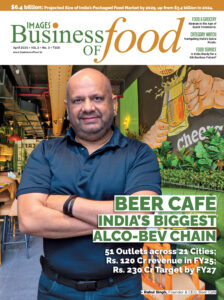The news media and the internet are inundated with talk of an e-commerce revolution in India. Here’s the thing though – the Indian e-commerce market is US $60 billion currently and is expected to touch about US $300 billion by 2030. On the other hand, the retail market is an order of magnitude larger and is expected to surpass US $2.2 trillion by 2030, of which 90% today is considered to be offline sales.
Why all this hype then? The fact is that today, online or offline sales are no longer an “either, or” choice. Brands have no option but to opt for an omnichannel strategy.
With 75% of Indian households now proudly wielding smartphones, consumer behavior has been flipped on its head. Gone are the days when a consumer-facing business operated in silos, with entirely independent teams running their verticals. For a brand to stay relevant, it must be available across the spectrum of shopping channels. From q-commerce to e-commerce to retail shops like modern trade stores, local Kirana stores and even the corner paan shop, an integrated omni-visible, omni-available and hence omnichannel sales approach is the need of the hour.
What exactly is this holy grail of sales called “omnichannel”? It refers to providing customers with a seamless and integrated shopping experience across multiple channels, both online and offline. Brick-and-mortar stores, e-commerce websites, mobile apps, social media platforms, and even traditional catalog sales are brought together to create a unified experience. This involves offering the same products or services across different channels while matching inventory, pricing, promotions, and brand identity to ensure a cohesive experience. No matter where or how a consumer interacts with your brand and products, the experience should be so cohesive it feels like one continuous conversation.
Of course, achieving this level of uniformity is no walk in the park. It requires constantly syncing inventory, pricing, promotions and brand voice across a dizzying array of channels. Plus, an omnichannel approach comes with a heftier price tag and uses more resources than focusing on just one channel. Taking an omnichannel approach also raises issues of consistency in offers, specification, prices, pan-India fulfillment turnaround time and sometimes creating differential catalogs to meet the needs of specific channel-based target groups.
But here’s the bottom line: the benefits of going omnichannel far outweigh the cons. Diversification of sales channels is the first step to ensuring global acceptance and consistent sales. In fact, shoehorning all your efforts into a single channel is like boxing with one hand tied behind your back.
Talking about trending sales channels, e-commerce in India is set to grow at 18% per annum through 2025. Businesses earn more digitally by eliminating the middleman and retail store rents while also collecting direct feedback from the customers about their products. This is a major reason why the Indian e-commerce industry is projected to reach US $300 billion by 2030. Even digital ad spending share is set to increase to 42% in 2024.
The online sales model has its pitfalls. In the Indian context where sensory inputs have traditionally been the primary means of buying products, e-commerce channels often result in higher product returns as customers are buying without having touched, felt or tried the product. This is also a reason for an inherent apprehension to purchase online and customers choosing Cash on Delivery (COD) for a sense of security.
A new peculiar phenomenon called ‘online counterchecking’ has also come into play with online shoppers. Most buyers today are looking out for the best deal and their faith in a brand is dependent on the option to compare offline and online prices. This has tied into the current online shopping process.
Other than this, for traditionally offline brands, the logistics shift from box-in box-out to a single order fulfillment model requires significant investment to ship their products. This is further complicated by the need to set up dedicated customer support that goes beyond product queries and covers order fulfillment and review management.
On the flip side, offline sales is a proven model. If the business manages to find adequate retail space, which comes at a premium, then the pay-off is that it will command customer loyalty and find itself in the customer’s shopping list.
As we read into this, it becomes clearer that both models complement each other. One could go as far as saying that both are now pillars of the entire shopping experience – where visibility, brand recall and ultimately sales are driven primarily by a brand’s availability across offline and online channels.
Thus, we come back to the original conclusion that omnichannel is the omni-way. Striking that perfect balance between online and offline, digital and traditional, automated and high-touch – that’s the secret sauce of sales henceforth. It may be resource-intensive, but the payoff is a customer experience so delightful and frictionless, that your brand becomes an irreplaceable part of consumers’ lives.




